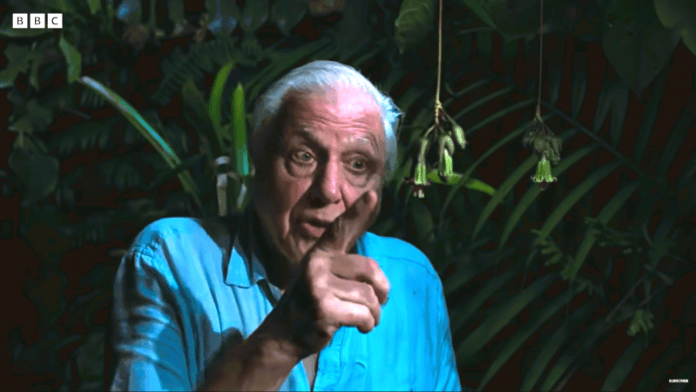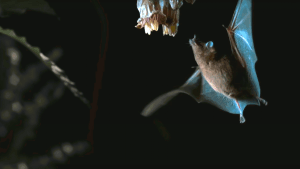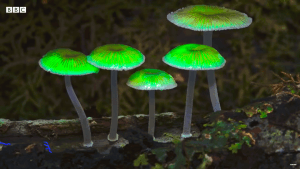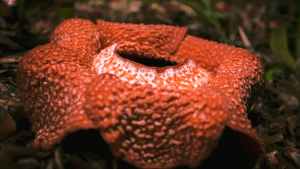
BBC’s latest five-part natural history stunner, The Green Planet, subtly tells the climate change story through the lives of plants and trees.
IT was in 1975, that the world first heard of ‘global warming’ which is today a hot button buzzword spoken by scientists and the common citizen but only pretentiously uttered by politicians at climate summits – as environmentalist Greta Thunberg, puts it: “blah… blah… blah!”.
It was Wallace Smith Broecker, an American geochemist, who first coined the terms ‘global warming’ and ‘climate change’ in his paper titled: ‘Climatic Change: Are we on the Brink of a Pronounced Global Warming?’
At that time, Broecker predicted that an exponential rise in atmospheric carbon dioxide would drive the mean planetary temperature up beyond those experienced during the preceding 1,000 years.
Despite Broecker’s views, insult and injury to the planet continue till today as some world leaders reject with disdain Broecker’s climate science.
The environmental challenge everywhere is viewed as an interruption to economic growth. Thus development and wealth creation are impatiently pursued.
Many would rather prefer that we unsentimentally harness natural resources. If the wheels of progress must keep on turning – one cannot suffer an emotional loss for a forest tree cut or a valley flooded to build mega dams. This seems to be the overwhelming mantra today.

BBC’s The Green Planet, presented by the eminent Sir David Attenborough, made its first appearance as a curtain-raiser during COP26 in Glasgow last year. Attenborough himself who was present and pleased to view the opening screener with an audience said: “For years plant life has been largely ignored when talking about climate change.
“But as viewers will see from watching the series, the green ecosystem is at the heart of all life on earth and thus it is important that we tackle biodiversity and climate change together.”
The making of The Green Planet, though it comes after the production and release of The Blue Planet – which featured the world’s big oceans – did not come as an “afterthought”. It was created to tell the climate change story by focussing on the real lives of plants and trees.
After the screening of The Green Planet premier during the COP26 summit, BBC’s chief content officer Charlotte Moore said: “The Green Planet could not come at a more critical time, when this precious kingdom of plants faces its greatest challenge yet, from our own human activities.”
She said: “The series has been a passion project for Sir David, 26 years after his ‘Private Life of Plants’ first aired on the BBC. The Green Planet has a critical role to play to informing and inspiring audiences, separating truth from fiction as well as winning both hearts and heads.”

Using pioneering new filmmaking techniques such as robotics, drones, moving time-lapse thermal cameras, deep-focus ‘frame-stacking’ and ultra-high-speed equipment to travel beyond the power of the human eye and the very latest science, The Green Planet takes the viewer on a journey into a series of magical worlds revealing minute living details of plants never seen before.
The documentary shows the lives of plants to be as competitive, aggressive, and dramatic as those of animals, and investigates the crucial role plants play in controlling our climate and maintaining our ecosystems.
The Green Planet series premiered to a global audience on January 10, with new episodes to be screened every Monday on BBC Earth.
‘Seeing plants, but not noticing them’
The Green Planet’s episode producer Paul Williams, who recently spoke to The Vibes in a roundtable with journalists from Singapore and Hong Kong, said the documentary took four years to complete and was shot on location in 27 countries.
“It was quite an undertaking with five different episodes put together, featuring plants in the tropical rainforests, plants in the water world, seasonal plants, plants in the human world, and plants in the deserts.”
Fellow episode producer Rosie Thomas said: “The global pandemic did pose some challenges but the crew had already shot 51 footages earlier and 42 were done after March 2020. Shooting under these restrictions was actually quite tricky but we used a lot of remote crews.”

To another question, Williams said the previous natural history series by BBC Earth is different from The Green Planet, which looked at the plant world from a different point of detail.
“We took a story approach, where we lent each plant a personal character of its own, as we did with animals before. To accomplish this, we innovated new robotic systems that allowed us to film plants in the wild in various immersive ways, to show their development and pictorially tell their stories upfront.”
Thomas chips in, saying: “There have been many series about plants and their behaviour in the last 20 years and all of them have some element of new science that show plants in a whole new way, in a way that was never seen before, as captured in the stunning footages of The Green Planet.”
Thomas hopes that viewers of The Green Planet will collectively get a hint of the “take away” message that The Green Planet offers. And that is to see plants, as well as to “notice” them in all their stupendous growth and being.
“I hope viewers will take away from the series the same thing that that I did. I now have a whole new understanding of the natural world. I walk into a forest now and see trees in a completely new way.”
Malaysian viewers of The Green Planet will be pleased to know that the world’s largest flower, the Rafflesia (Rafflesia arnoldii), endemic to the Borneo state of Sabah, got a cameo slot in the show.
A specially innovated remote control camera called the Triffid zoomed in to capture time-lapse images of the flower in bloom, which Attenborough calls the “corpse flower” in his script.

The Rafflesia has a repulsive odour to attract flies, bees, and other insects in order for it to achieve successful pollination.
The Green Planet’s Rafflesia was an unexpected “serendipitous take” as it was not included in the original shooting script – being a flower that takes nine months to mature and it’s flowering only lasts for four or five days.
According to Williams, he had tried shooting the Rafflesia seven years ago but it failed to fully bloom.
“This time around, the crew was shooting pitcher plants in the foothills of Mount Kinabalu when we received information that a Rafflesia was about to bloom at a location nearby.
“We moved our crew there and set up a canopy under which we placed seven time-lapse cameras over a 24-hour period and successfully got those live images of the flower opening as it bloomed.”
He said: “These footages of the Rafflesia turned out to be the ‘high point’ of The Green Planet’s tropical plants episode, as the Rafflesia itself is one of the most alien, monstrous, and beautiful flowers on Earth.”
Viewing The Green Planet, I somewhat feel a kind of “guilt trip” within me to admit: “Mea culpa,” (through my fault), being a part of the destructive human family and a deleterious agent to the planet. – The Vibes, January 15, 2022
Republished from: Watch The Green Planet and admit ‘mea culpa’ to climate change | Our Planet | The Vibes









